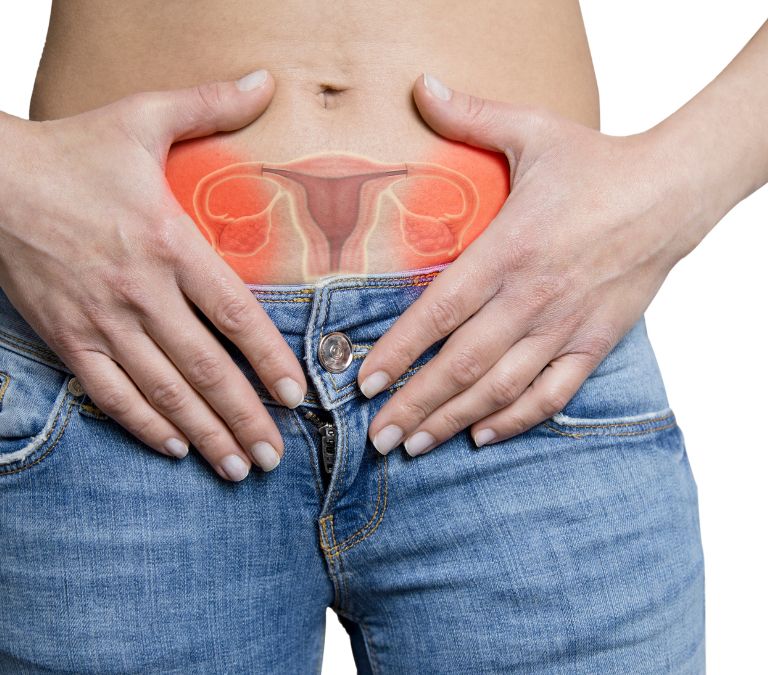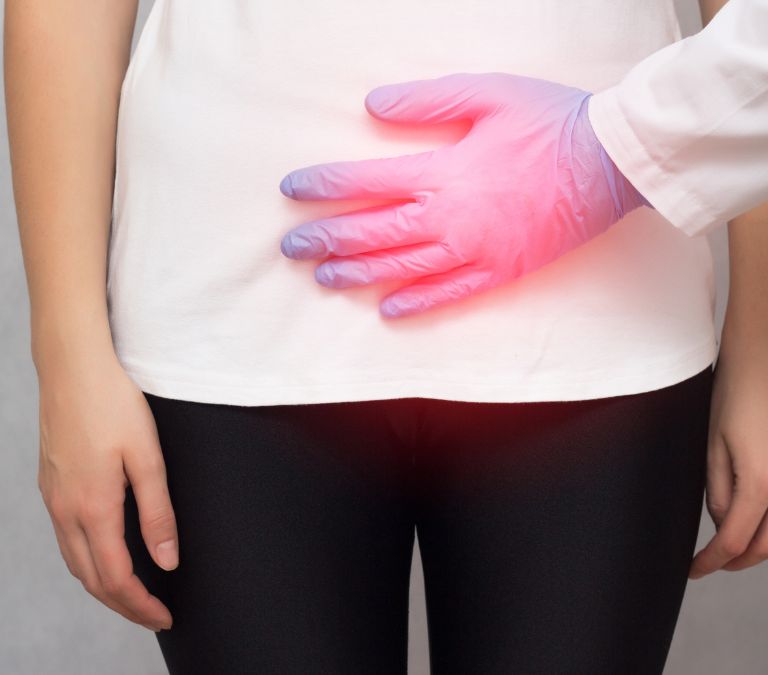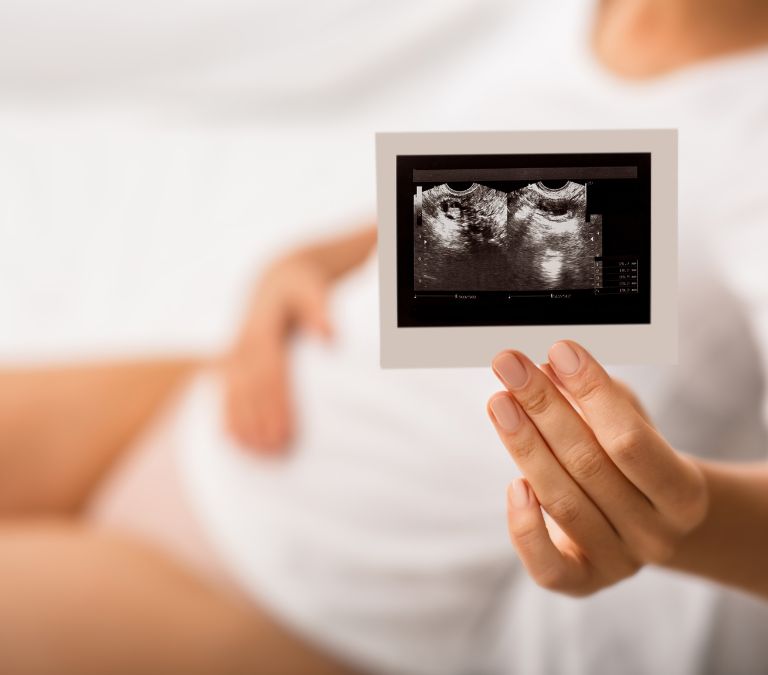As we transition into menopause, we can’t help but wonder, do we still have to worry about some of the conditions we had to worry about in perimenopause? An example is ovarian cysts. Should it not be that, since menopause indicates the end of our ovaries as functioning systems, we would not have to worry about such conditions that deal with our ovaries? Well, for ovarian cysts, the answer is no. While we might have a reduced risk of getting this condition, we still have ovaries; hence, it is possible to have ovarian cysts.
What Are Ovarian Cysts Exactly?

Your ovaries are a significant part of your reproductive system. It would not be much of a reproductive system without the ovaries. Every cis-woman, including you and I, has two sets of ovaries, one on each side of the lower abdomen. It is these ovaries that produce eggs for fertilization. They also make the two hormones estrogen and progesterone and play a significant role in the menstrual cycle. When they start losing their functionality, the transition to menopause begins.
A cyst is a fluid-filled sac. When this cyst forms on one of the ovaries, we have an ovarian cyst. It is pretty common among women as most women will develop at least one cyst. In most cases, cysts are asymptomatic and painless, so most women do not even know they have this condition unless a medical practitioner makes a proper diagnosis. In most cases, there is no need for this as most cysts go away independently.
But in some cases, they might persist and require treatment before the woman can feel completely healthy again. It is especially the case when the cysts rupture or twist. When this happens, the woman is sure to feel pain and require immediate medical attention.
The need for constant examination becomes apparent when you realize that ovarian cysts might be a complication due to an underlying medical condition.
What Does An Ovarian Cyst Feel Like
I already said that ovarian cysts do not usually come with symptoms. The implication is that most women do not know what to look out for, and even when they present with symptoms, the symptoms might vary from woman to woman, so you do not know what to expect. First, look at some of the symptoms, if any, that you might see when you grow an ovarian cyst.
- bloating or swelling in the abdomen
- bowel movements that hurt
- pelvic pain before menstruation
- soreness in the lower back or thighs during the intercourse
- soreness in the breasts
- vomiting and nausea
When you get these symptoms, they probably indicate that you might have a growing ovarian cyst. However, these symptoms might not be severe, and since most cysts tend to go away on their own, you might not need to see a doctor. However, a cyst might require immediate medical attention when it ruptures or twists, and you will know if this is the case when you start feeling symptoms like;
- Fever
- Faintness or disorientation
- Acute or intense pelvic pain
- Rapid breathing
Because ovarian cysts can form when an egg is released during your monthly cycle, they are frequently during menstruation. It is prevalent among women who haven’t hit menopause yet. But what about women who are going through the menopausal transition or have been declared postmenopausal? Do we still need to be worried about ovarian cysts?
Is Ovarian Cysts After Menopause Common?

Our ovaries are usually associated with our reproductive cycle. And ovarian cysts are generally associated with active ovaries because they typically occur during the menstrual cycle. When we become menopausal, it is believed that our ovaries are now inactive and cannot function anymore. They are incapable of producing viable eggs, and you may think you can’t get ovarian cysts anymore.
After all, they are most likely to occur during menstruation, and you do not menstruate anymore. Even though you are menopausal, you can still get ovarian cysts. As long as your ovaries are still located inside your body, there is still a chance of you getting ovarian cysts. It is, however, less common among women who are menopausal. If a menopausal woman has an ovarian cyst growing in her, they are probably one of two kinds:
- Cystadenomas: This type of ovarian cyst grows on the surface of the ovaries. Ovarian cystadenomas are a type of benign epithelial tumor with a good prognosis. They are widespread and do not usually amount to any complications. They disappear on their own after a while.
- Dermoid: A dermoid cyst develops from cells you have had since birth, or they might have even been created a long time ago but have been just recently noticed. Ovarian cysts can be linked to a woman’s menstrual cycle. However, an ovarian dermoid cyst has no bearing on the ovary’s function. Sometimes, an ovarian dermoid cyst appears before birth, just like other types of dermoid cysts. The thing about dermoid cysts is that they do not disappear independently. They might not cause severe discomfort, but they will need surgical treatment to remove them.
When you have a growing ovarian cyst, you suffer symptoms similar to what you would have if you were not yet menopausal. Some of these signs and symptoms are:
- bladder or bowel problems
- dull aching in the lower back or thighs
- pressure, bloating, swelling
- pain in the lower abdomen
- pain during intercourse
- bladder or bowel problems
- weight increase
- spotting or bleeding
Since we have said it is more likely for ovarian cysts to occur during menstrual periods, why do menopausal women have it? What risk factors make us prone to get something we should not usually get?
- Fluctuating Hormones: An ovarian cyst is more likely to develop if there is a hormonal imbalance. And we all know that menopause is hugely characterized by fluctuating hormones. These fluctuating hormones significantly increase our risks of developing an ovarian cyst.
- Pelvic Infections: Infections that occur in the pelvis and are severe enough to spread to the fallopian tubes and ovaries are most likely to cause an ovarian cyst.
- Polycystic ovarian syndrome (PCOS): This disorder, polycystic ovarian syndrome (PCOS), alters a woman’s hormone levels. A woman who has polycystic ovarian disease will produce more male hormones. Hair growth on the face and body, as well as baldness, are all symptoms of PCOS. It can also lead to long-term health issues like diabetes and heart disease. Cysts in the ovaries and excessive levels of male hormones are the most common indications of this condition in menopausal women.
- Endometriosis: Endometriosis is a condition in which tissue that has a similar structure to the lining of your uterus grows outside the uterine cavity. Someone with this condition will most likely have endometrial-like tissue on the ovaries. These endometrial tissues might create a cyst when they adhere to your ovaries.
- Hypothyroidism: Hypothyroidism develops when your body does not create enough thyroid hormones. Women are more commonly affected by hypothyroidism than males. It is more frequent in adults over 60, but it can start at any age. People with this condition, especially menopausal women, are more likely to develop ovarian cysts.
- Excessive Cigarette smoking can also lead to this condition.
Are Ovarian Cysts After Menopause Cancerous?
But then, is there any risk to having these conditions? Since most of them are benign and will disappear if let alone, is there any reason for us to be worried?
After a woman reaches menopause, ovarian cysts are less likely to occur. Since menopause means that we are no longer going to have periods and since ovarian cysts usually happen during the menstrual cycle, this should be understandable. However, it is still possible to grow a cyst after menopause. These cysts that grow after menopause, while very unlikely, have a higher risk of becoming malignant.
Ovarian cysts can form due to aberrant and excessive cell proliferation in the ovary. These types of cysts are called pathological ovarian cysts. And the thing about pathological ovarian cysts is that they can sometimes be malignant, meaning they have the potential to progress into ovarian cancer. Pathological cysts are more likely to occur in women who have reached menopause.
Pathological ovarian cysts can also be caused by underlying diseases such as endometriosis. Endometriosis is a disorder in which the cells that line the womb begin to emerge elsewhere in the body, such as the ovaries and fallopian tubes.
Ovarian cancer develops when cells in the ovaries expand and replicate uncontrollably, resulting in tumor formation. These tumor cells can spread to neighboring tissues and other body parts if not treated.
Different forms of ovarian cancer can develop depending on which area of the ovaries the disease began. The most frequent type of ovarian cancer is the epithelial tumor, which starts in the cells on the ovaries’ outer surface.
The symptoms of ovarian cancer include:
- pelvic pain, such as a dull or sharp pain in the lower abdomen
- abdominal discomfort, such as bloating and heaviness
- feeling full quickly and after having small amounts of food
- loss of appetite
- trouble emptying the bladder or the bowels
- frequent or urgent need to urinate
- pain during sex
- abnormal periods, such as very heavy, very light, or irregular periods
- fever or vomiting
Anyone experiencing these symptoms should seek medical attention. If a person with ovarian cysts has severe, uncommon, or persistent symptoms, they should consult a doctor.
Do Ovarian Cysts After Menopause Go Away On Their Own?

While ovarian cysts are more likely to resolve before menopause, especially if there is no further complication, this is not the case for women who have undergone the menopausal transition. With menopause, ovarian cysts are most likely to remain if not treated. Therefore, menopausal women with this condition might have to seek medical care if it is detected.
It is especially important if you have health risks or a family history of cancer. You do not want a scenario where you will have to deal with an ovarian cyst progressing into cancer. So what treatment options are available to people who want to get rid of their ovarian cysts?
The important thing will be to find out if the cyst is benign or malignant. It is especially important for us because menopausal ovarian cysts can be malignant. We will look at the different ways available to check for and diagnose the kind of cyst you have in a bit.
However, When we have found out whether the cyst is benign or cancerous, we can then go for the treatment option that is best for us. Most of the time, the go-to treatment is the surgical removal of the cyst. This procedure is known as a cystectomy. If, after this process, the cyst is confirmed to be malignant, you will be transferred to the right medical personnel for your case. In most cases, this is an oncologist.
Can An Ultrasound Tell If An Ovarian Cysts Is Cancerous?
To answer this question, we also have to look at how ultrasound is used to diagnose ovarian cysts. When you present the doctor with symptoms likely to be due to an ovarian cyst, the first thing they would do is a pelvic examination. It is to ensure that there is something wrong. The doctor will probably ask you questions about your family history during this period.
Now, why is it possible to have ovarian cysts after menopause? It is not very common, so your doctor will try to eliminate every other possibility. It is where the ultrasound comes into play. To diagnose ovarian cancer, you may have an exterior ultrasound of your lower tummy (pelvis) or a vaginal ultrasound.
Ultrasound scans provide a picture of a portion of the body using high-frequency sound waves. The ovaries, womb, and surrounding structures can all be seen. It is why it is perfect for visualizing ovarian cysts.
The doctor or radiographer moves a probe across the lower region of your tummy during an external ultrasound of your pelvis. It will give you pictures of everything the search moves over. The examination for a vaginal ultrasound is inserted into your vagina. It is also called a transvaginal ultrasound.
A vaginal ultrasound can reveal whether or not any cysts on your ovaries are cancerous. If there are any solid portions in a cyst, it is more likely to be cancerous. There is a possibility that your ovaries might not show up in an ultrasound if you are postmenopausal. It indicates that the ovarian cysts are probably tiny and not cancerous.
If this is the case, then you have nothing to worry about. However, if you have a suspicious-looking cyst, your doctor will advise you to get it surgically removed. In the laboratory, the cyst is examined closely for any sign of malignancy. After this is done, your risk of malignancy index is calculated.
The risk of malignancy index (RMI) is a measure that doctors can use to determine whether an aberration is more likely to be cancer or not. A lot of factors are considered here. The result from your ultrasound, your menopausal state ( I mean, we already mentioned that it is more likely for a cyst to be cancerous in menopausal women.), and your CA125 blood levels. Your CA125 level measures the level of cancer antigen, also known as CA125 protein, in your blood. All these factors combine to give your risk of malignancy index.
It will give your doctor a final result, and if you have a high score, your doctor will direct you to a multidisciplinary team of specialists (MDT). They decide whether or not additional testing or surgery is required.
Your physician may request a CT scan of your ovaries to see them more clearly. However, it is sometimes impossible to detect ovarian cancer with certainty without a surgical procedure.
Whether your specialist believes it is unlikely that you have cancer but cannot rule it out completely, they may ask you to return for a follow-up ultrasound scan in three months to see if any change has been observed.
Can You Still Have Ovarian Pain After Menopause?
After menopause, it is assumed that our periods will stop. And if there is something we usually associate with our periods, it’s menstrual cramps. I mean, it is one of the reasons why some of us are so glad to be going through menopause. We believe that we won’t have painful cramps anymore. But what if that isn’t the case? Is it possible that even after menopause, we can still get ovarian pain?
The ovarian pain we feel during our periods is due to eggs bursting open from the ovaries Into the fallopian tubes. This pain is so widespread that it even has a German term. It is called mittelschmerz, which means moderate pain.
But then, if after menopause we can’t produce viable eggs anymore, shouldn’t it go without saying that we should not experience ovarian cramps anymore?
Well, not entirely. Mittelschmerz is not the only reason we might experience pains in the ovaries. We might be getting this pain for several reasons, especially when we are well into menopausal transition. They include:
- Ovarian cysts: Growing Ovarian cysts might come with ovarian pain. It is even more likely if it progresses into ovarian cancer.
- Ovarian and uterine cancer: You might have to visit your healthcare provider for proper diagnosis and treatment options.
- Endometriosis can also lead to pelvic pains.
- Uterine Fibroids: These tiny growths can develop in the wall of your womb or uterus. It isn’t a cause for worry because they are often benign, meaning they aren’t malignant. Uterine fibroids are more likely to form before menopause, but they can affect anyone at any age, including us, who have successfully transitioned into menopause.
- Chronic constipation: This is a prevalent cause of pelvic cramps.
What Percentage Of Postmenopausal Ovarian Cysts Are Cancerous?
Since it is more likely that ovarian cysts in menopausal women will progress into cancer, I think it would be a good idea to figure out the statistics. You can read our article on menopause facts and figures here.
Because of the advances in medical technology, there seems to be a rise in the number of menopausal women with ovarian cysts. But this is probably a result of the better diagnostic tools and not any increase in cases.
However, even though this is the case, it is still a worry that menopausal women are more likely to have ovarian cysts that progress into ovarian cancer. So what percentage exactly are we looking at here? What is the likelihood that being diagnosed with an ovarian cyst after menopause means you are at risk of getting ovarian cancer?
A study I was reading said that 7 percent of postmenopausal women worldwide would get ovarian cysts. This number increases to 18% in the United States. However, only a fraction of these cases are cancerous. Of all the surgical removal of ovarian cysts, only 13 to 21 percent of these cases have proven to be cancerous.
So what are the key takeaways? A fluid-filled sac in or on the ovary is known as an ovarian cyst. Cysts can appear at any point in a woman’s life. Cysts can form after menopause. However, many are related to the menstrual cycle; therefore, it is more likely that you would have this condition before you transition into menopause.
Ovarian cysts are often asymptomatic, benign, and self-resolving, so you might not have much to worry about in most cases. However, they can cause discomfort and other symptoms if they become too large. They are also capable of rupturing and causing ovarian torsion. These will result in pain and other symptoms. Surgical removal of ovarian cysts that cause pain or other symptoms is possible.
After menopause, the risk of ovarian cancer increases. You should consult a doctor about your symptoms and don’t delay your diagnosis and possible treatment.







